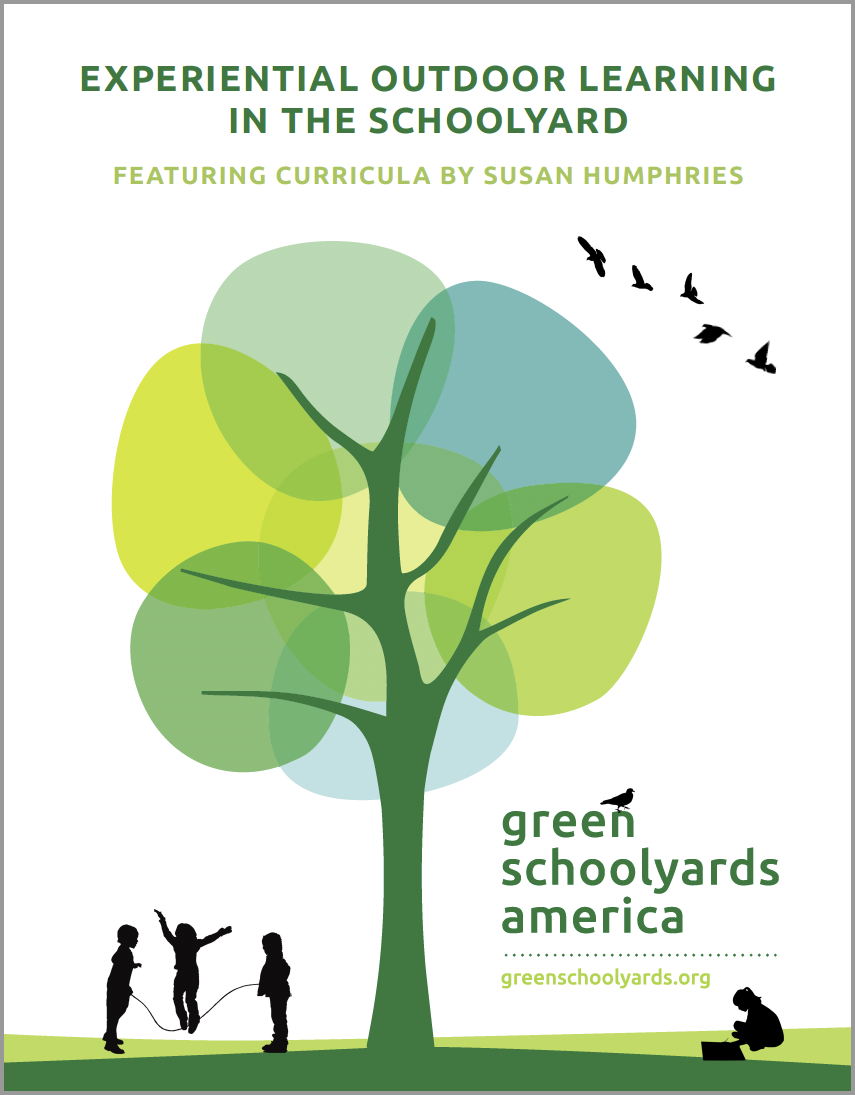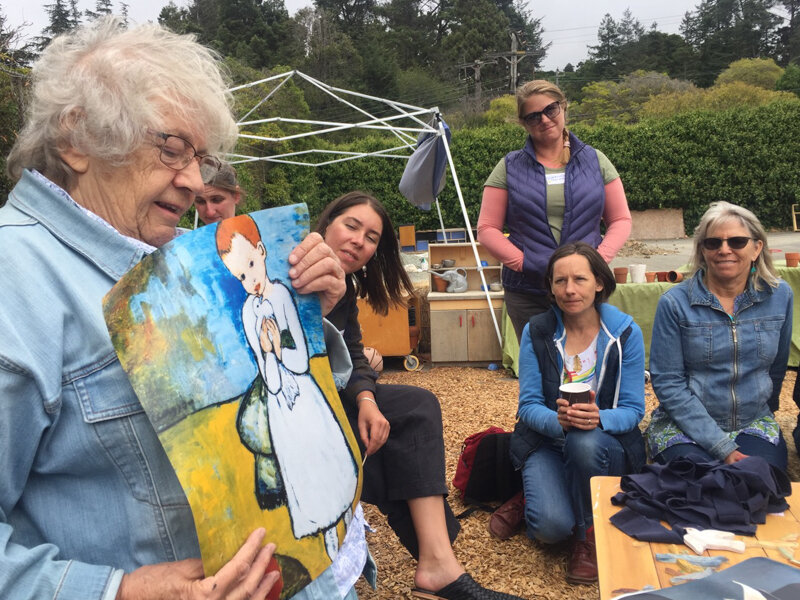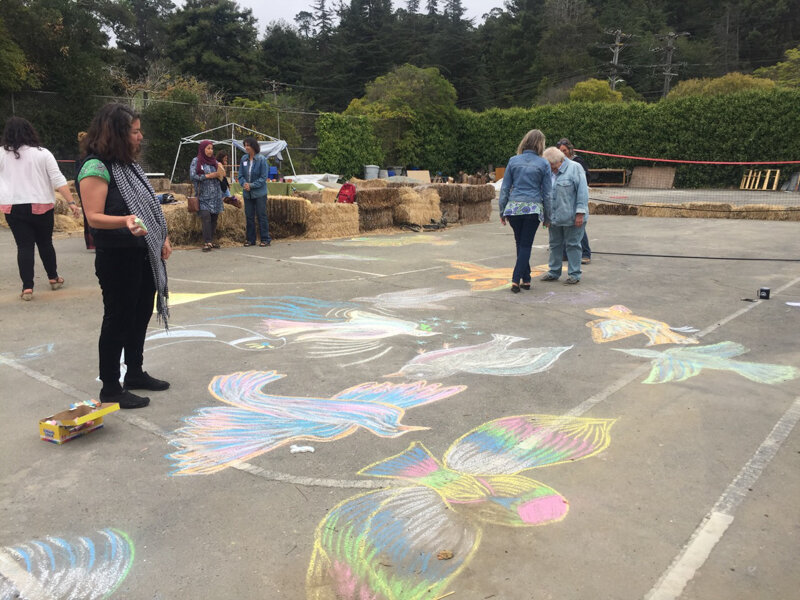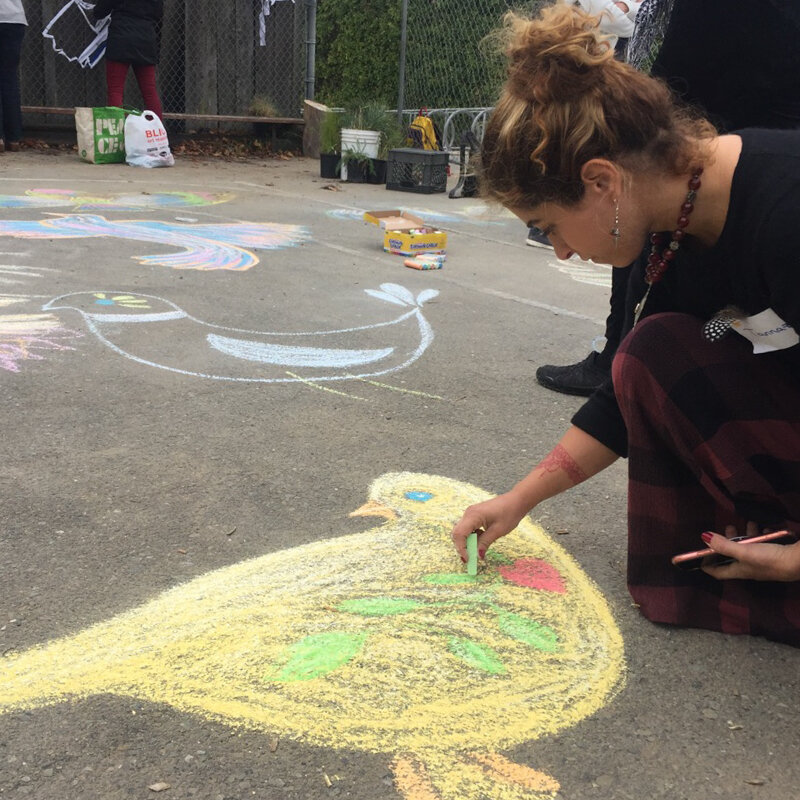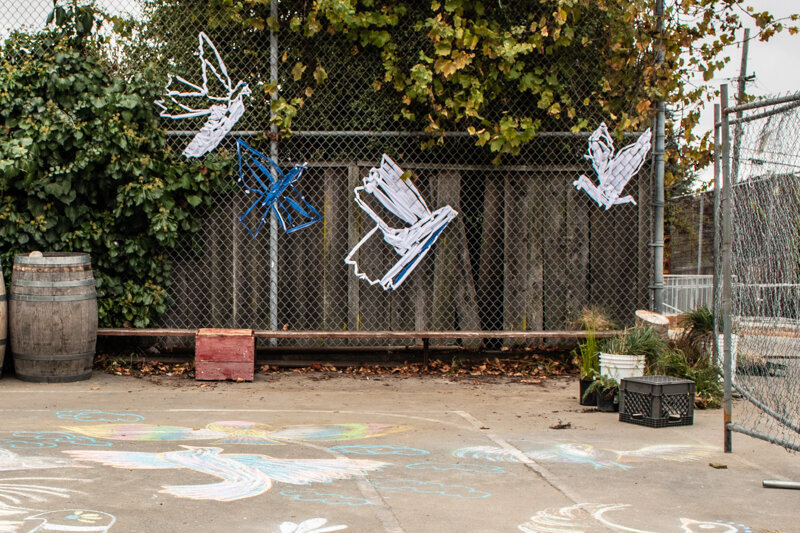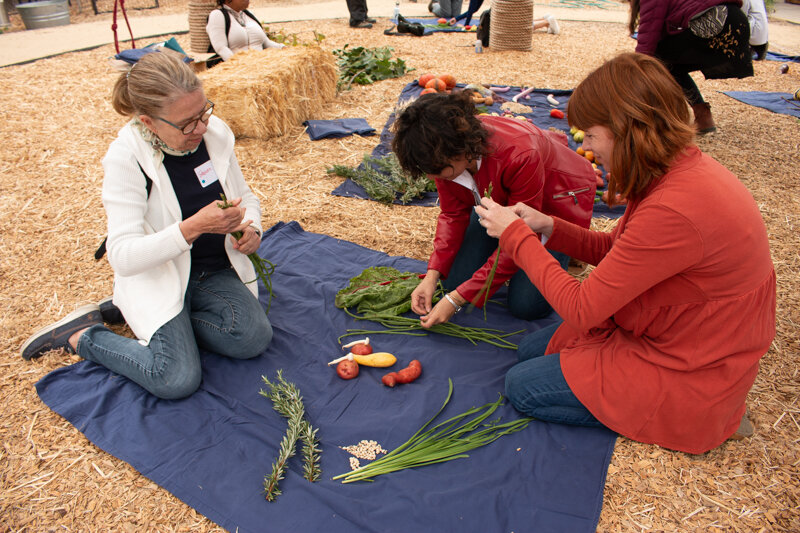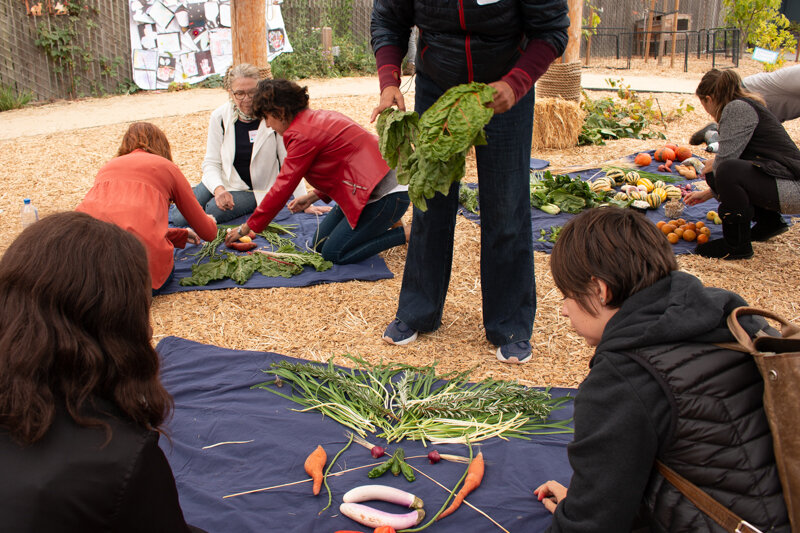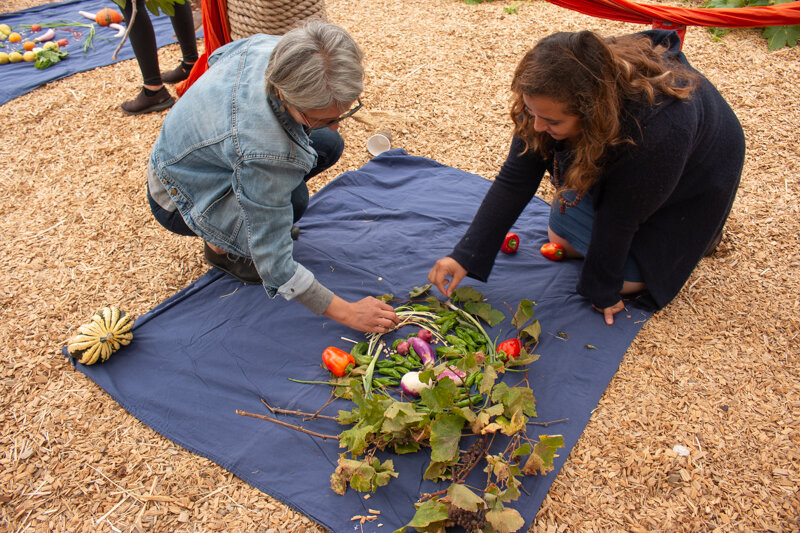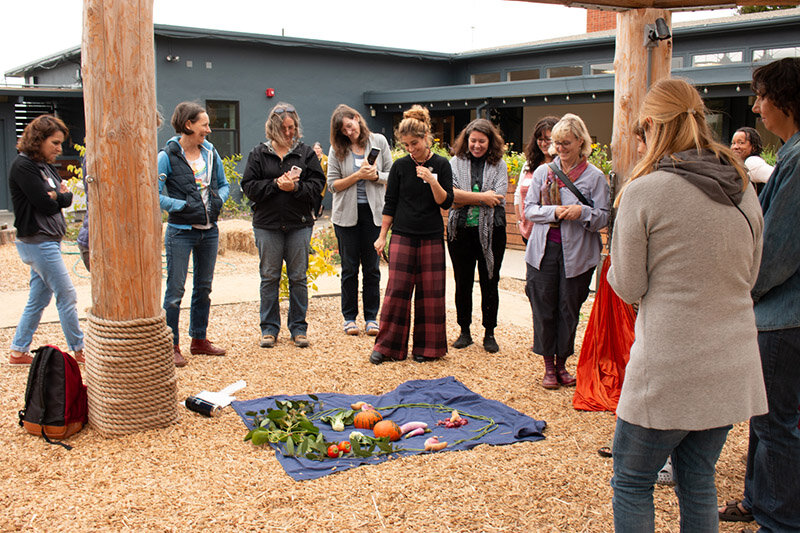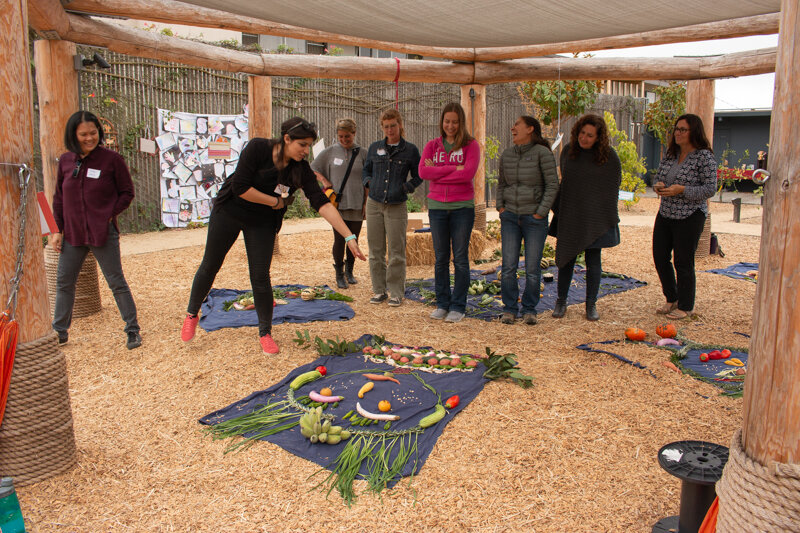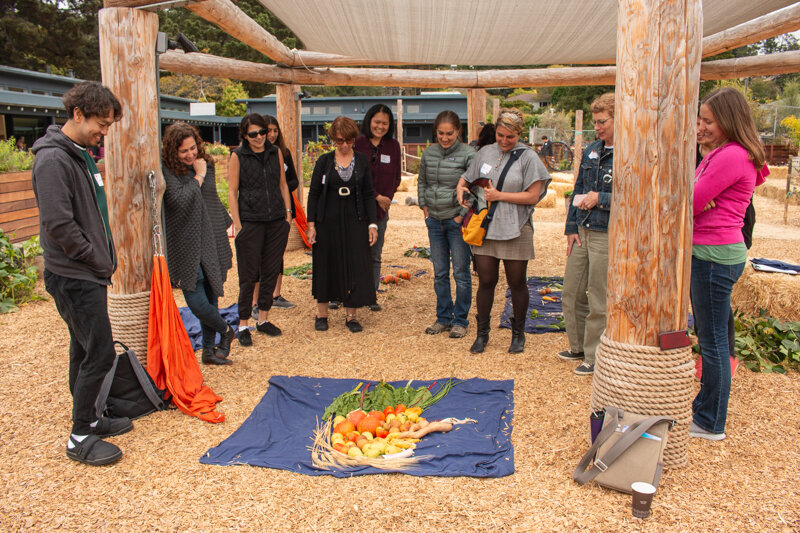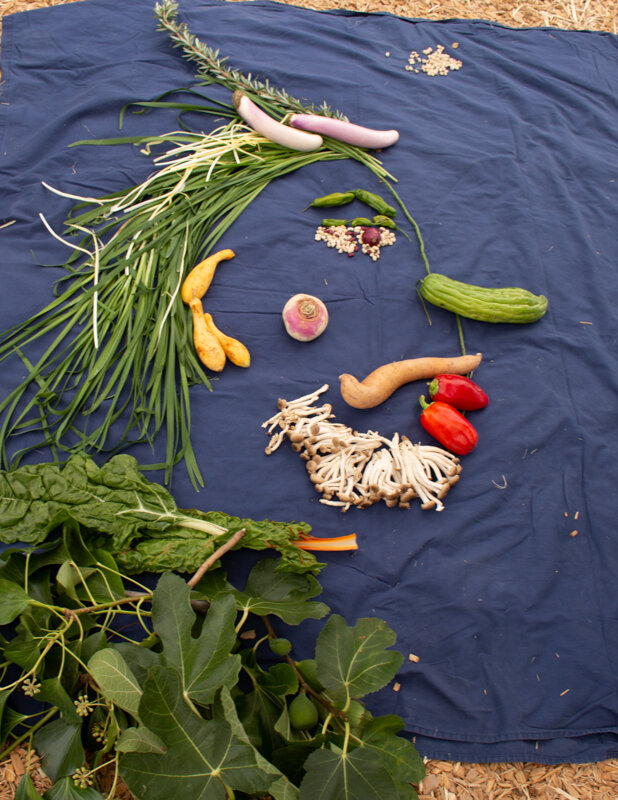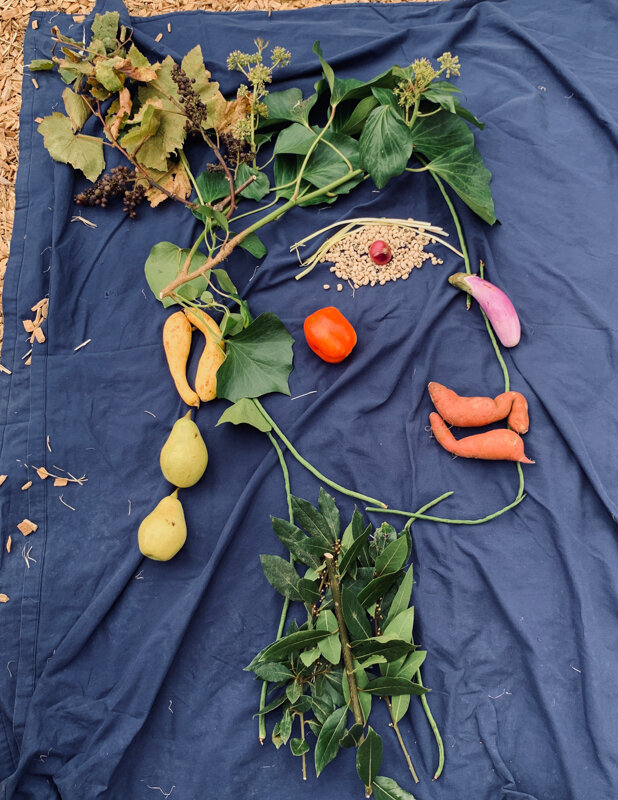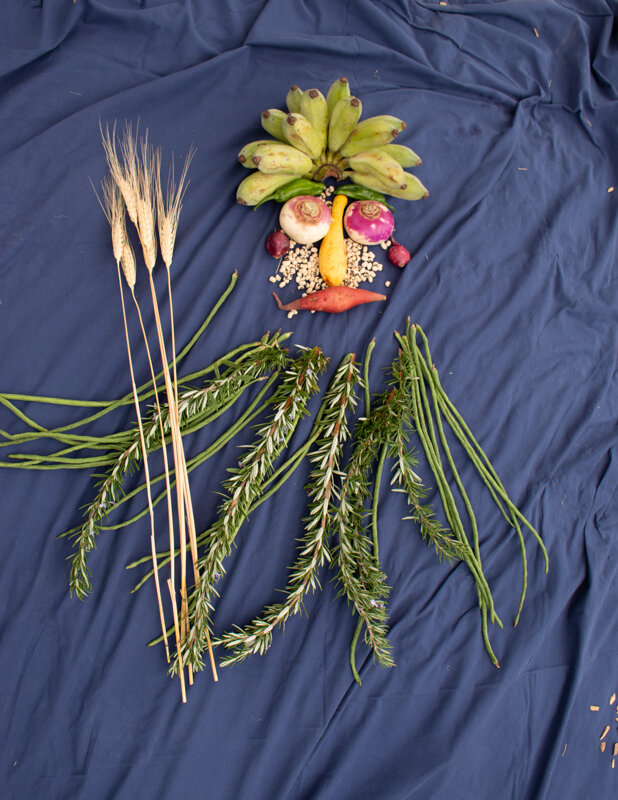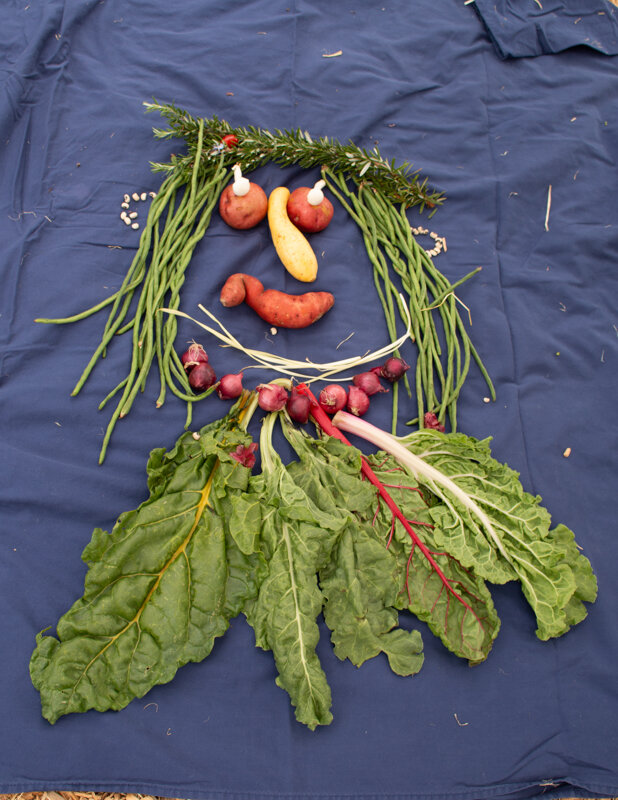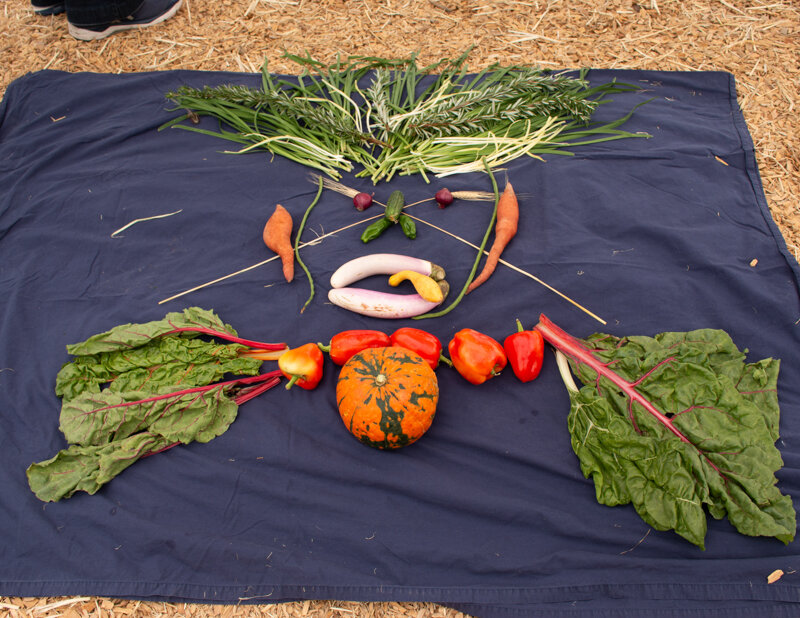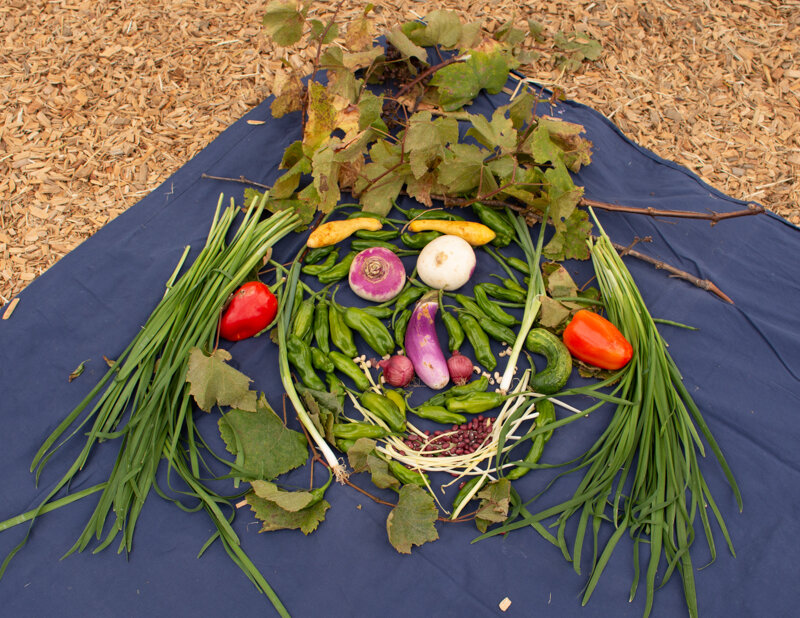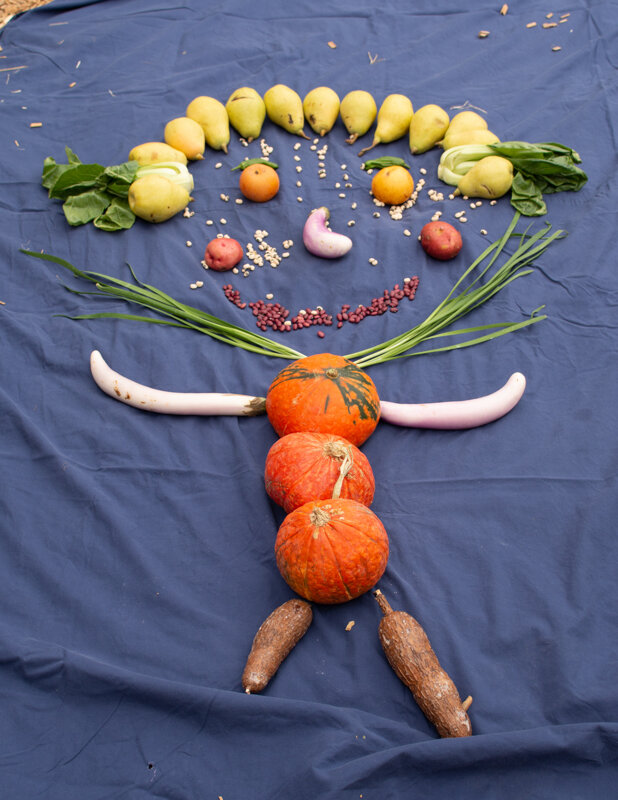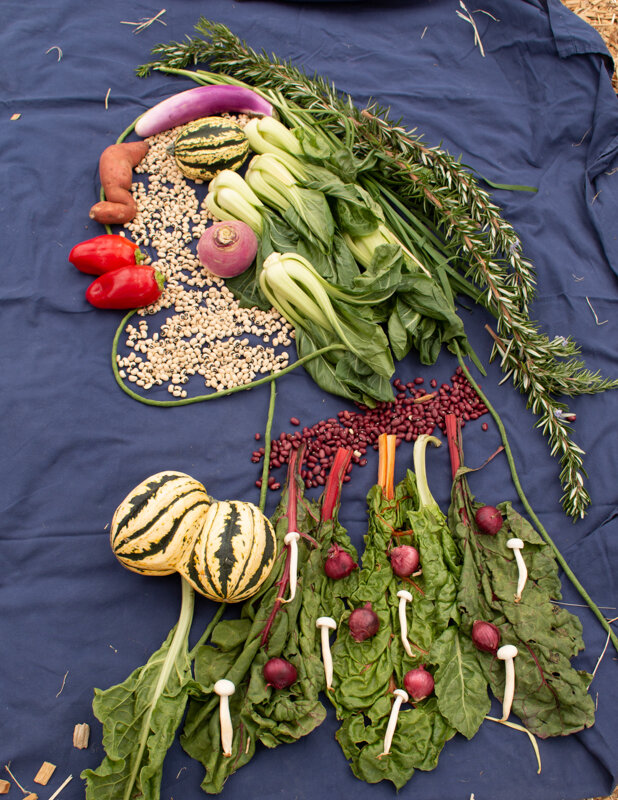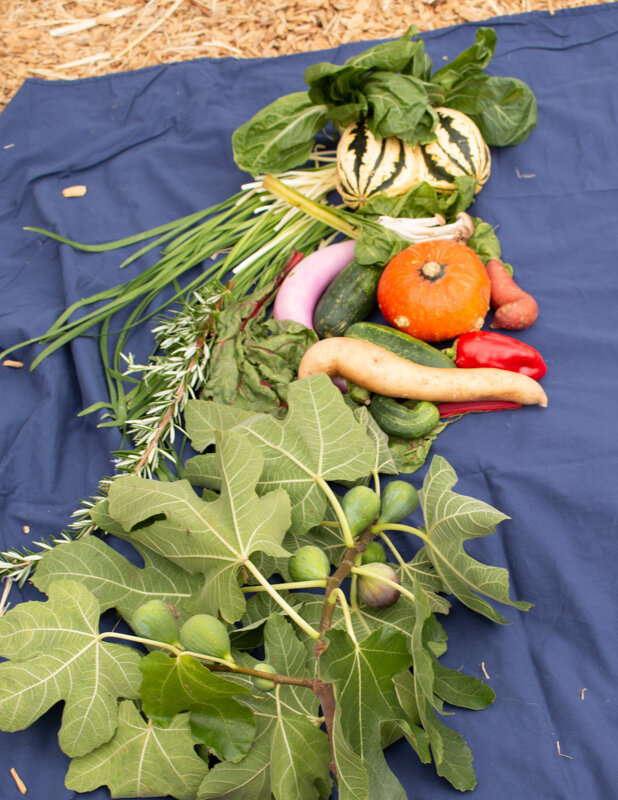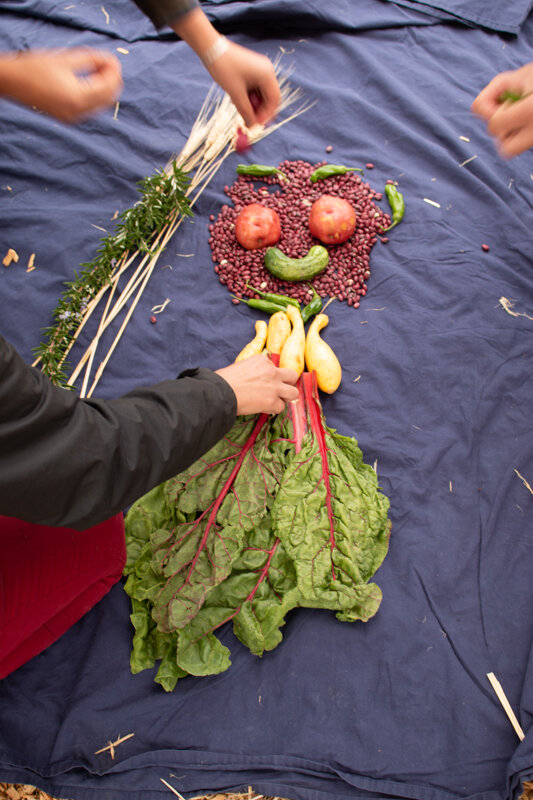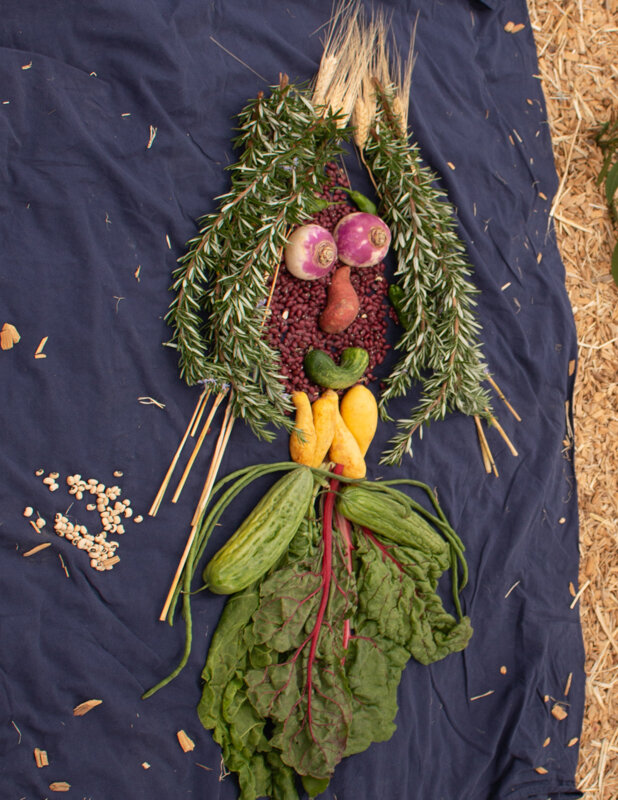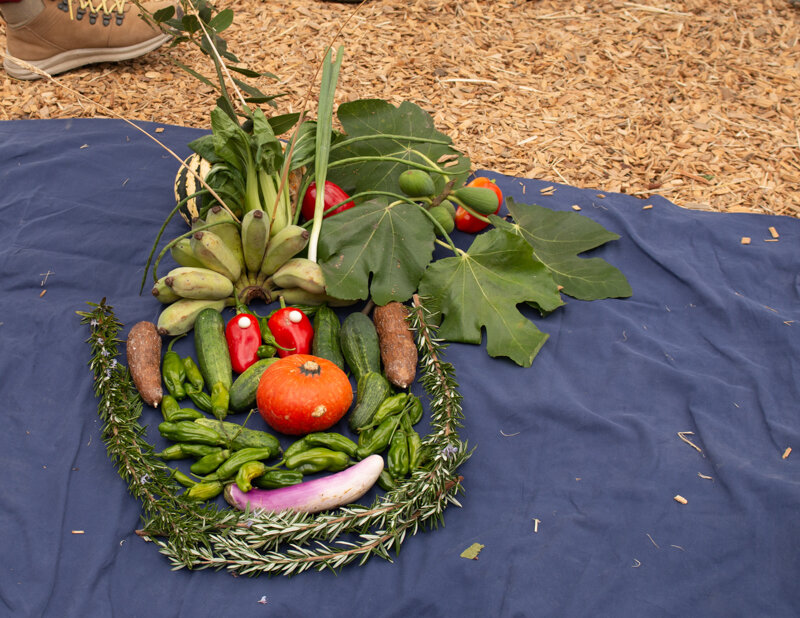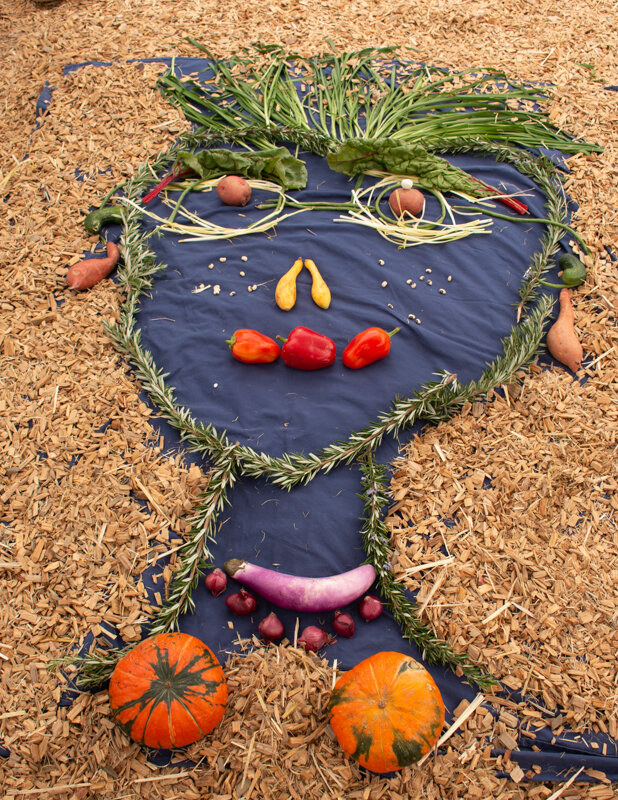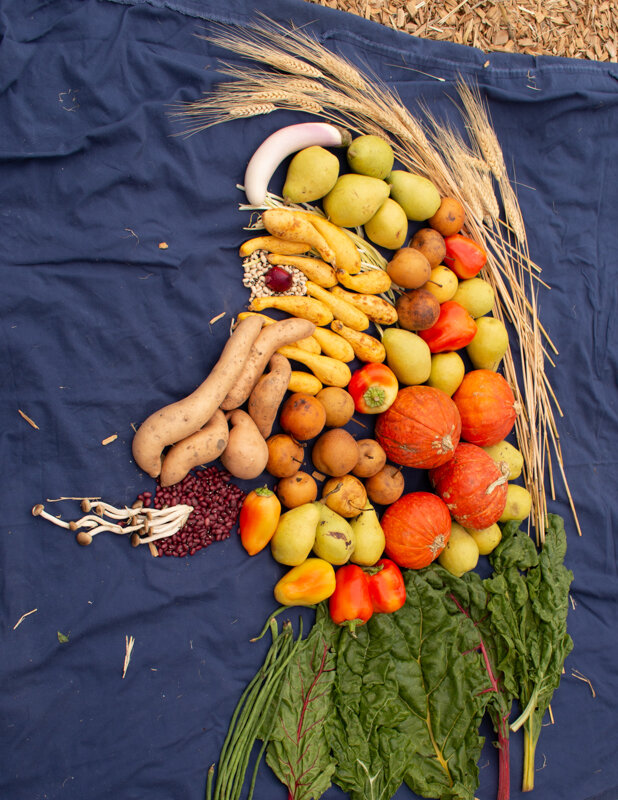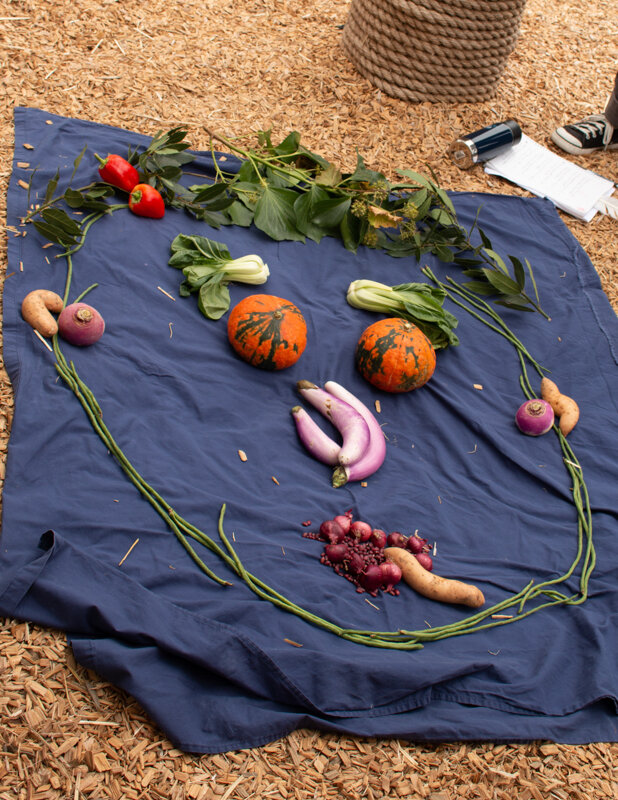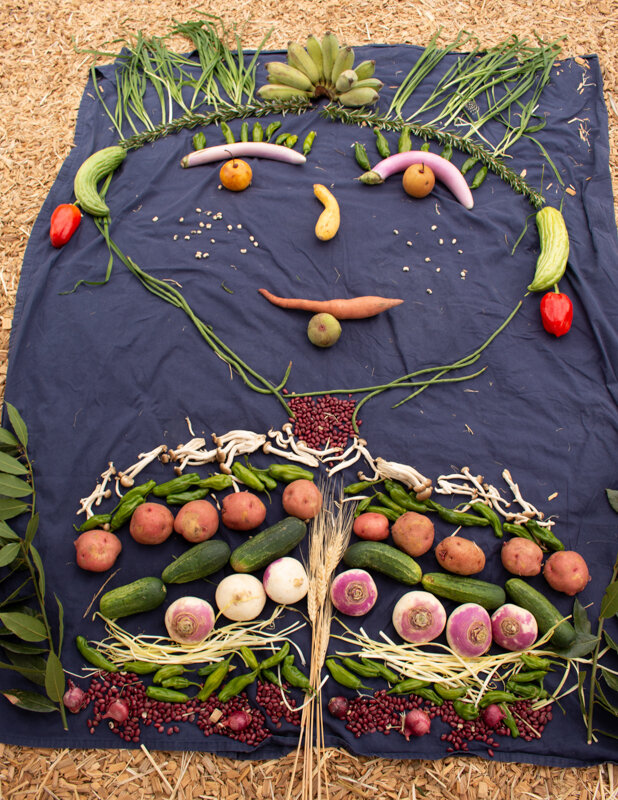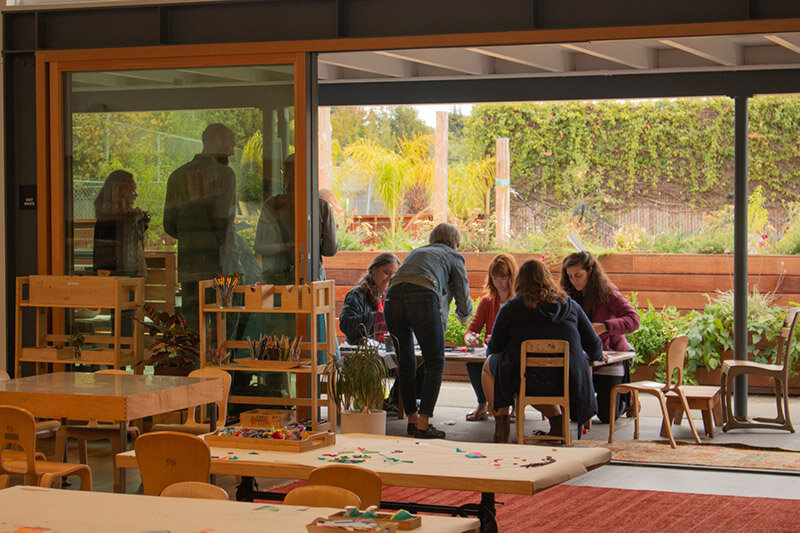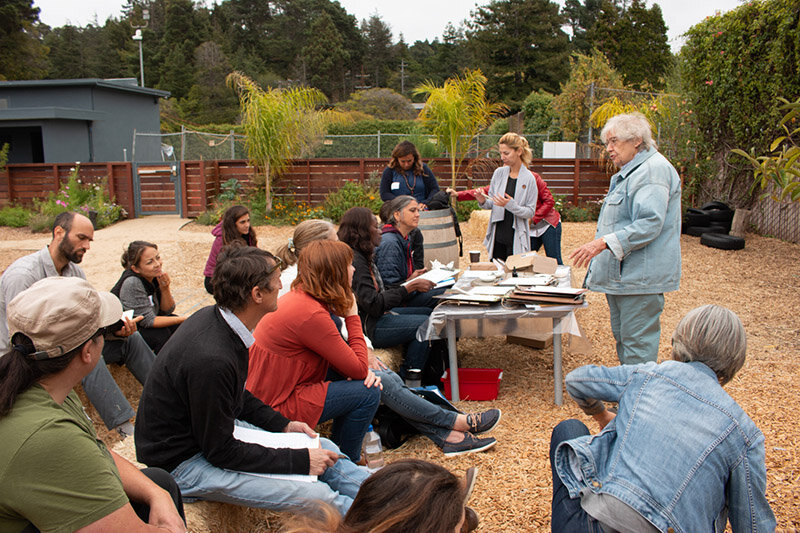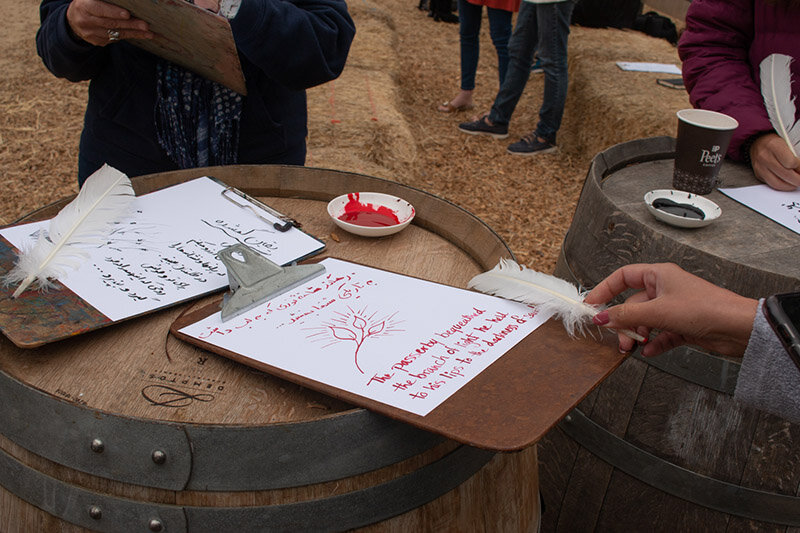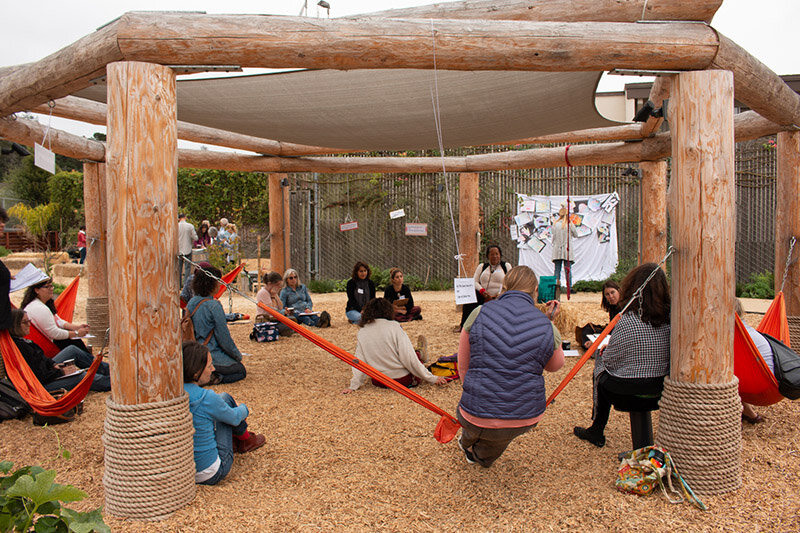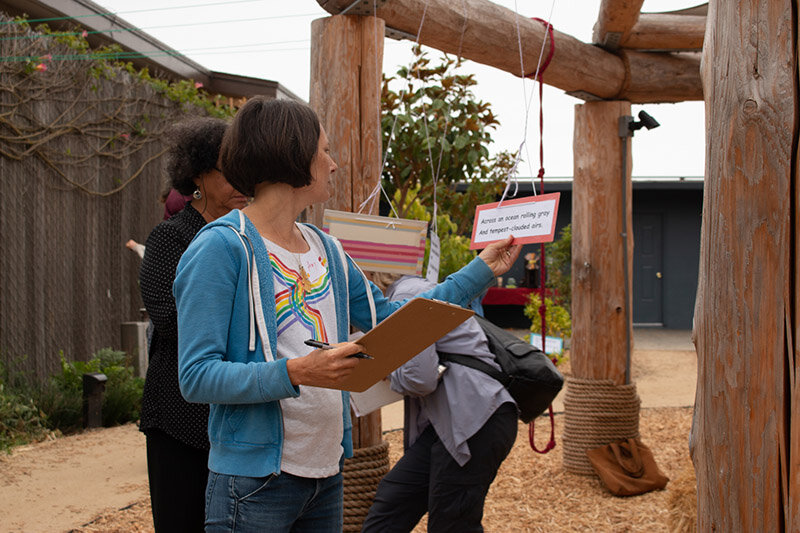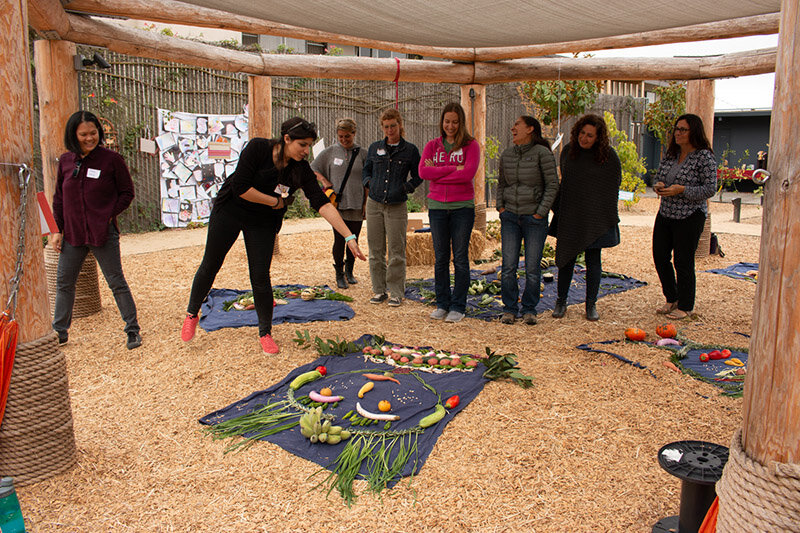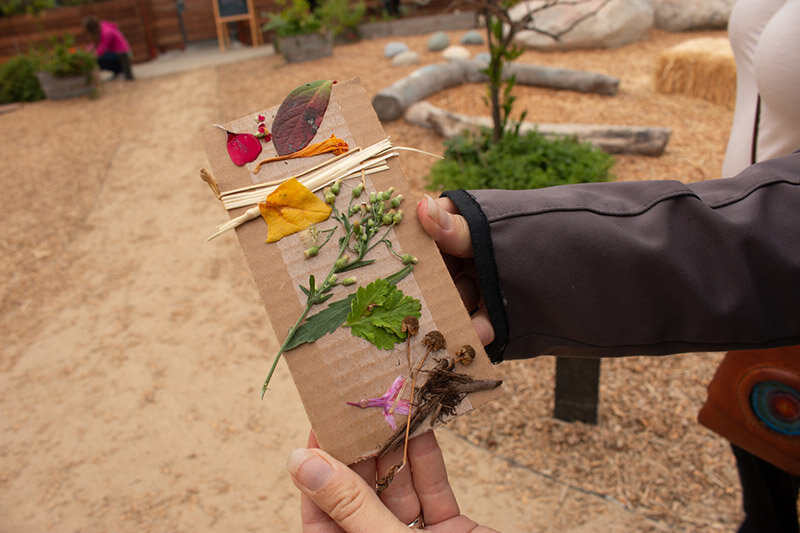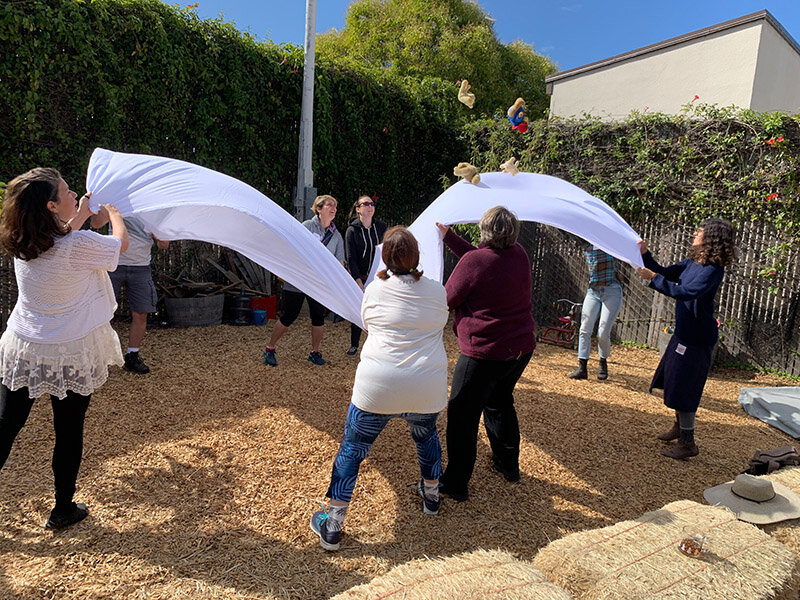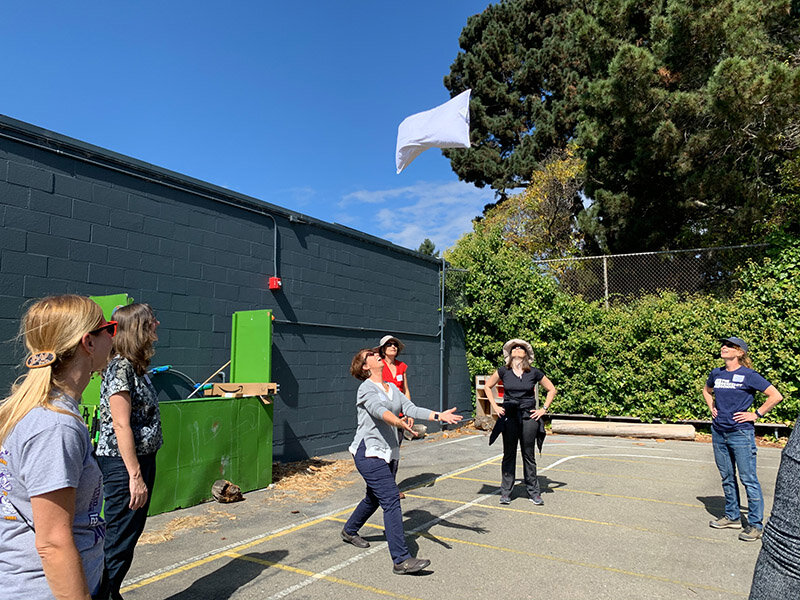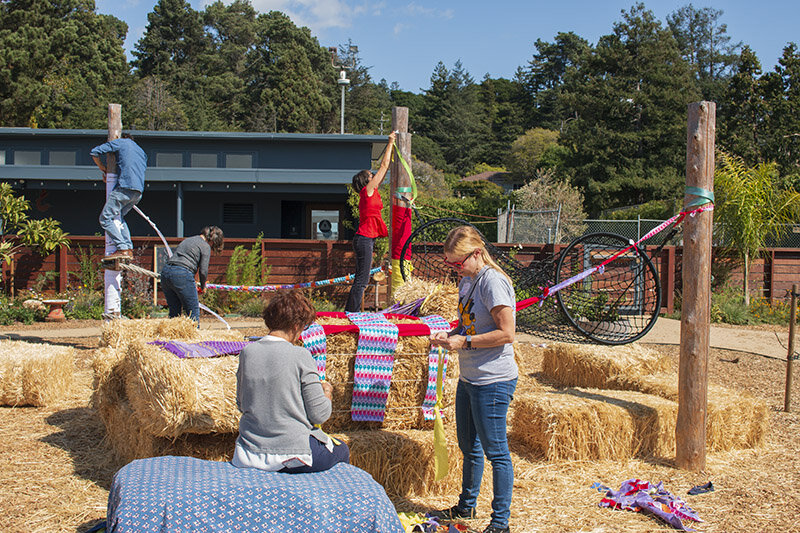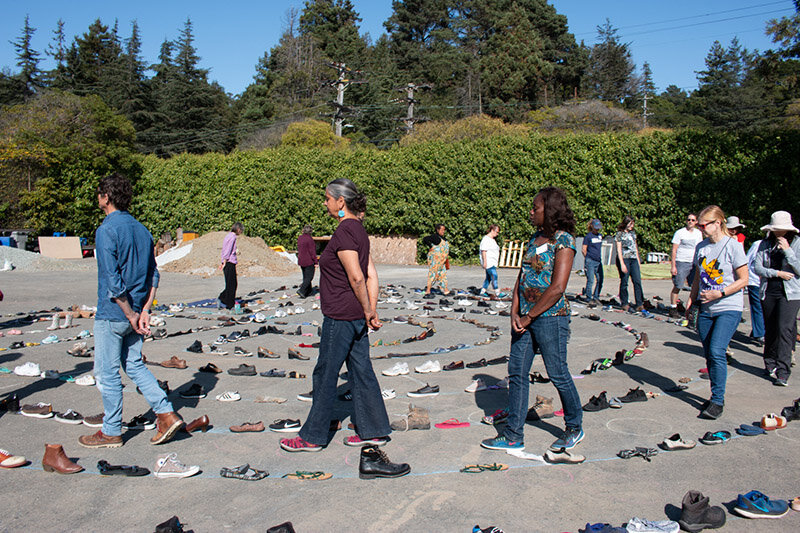Sharing Experiential Learning with Bay Area Educators
/Our colleague, Susan Humphries, MBE, MA, traveled to the San Francisco Bay Area from England at the end of September to collaborate with Green Schoolyards America and our colleagues on four days of public events. She shared a wealth of knowledge and expertise in teaching methods that are based on outdoor experiences and a deep understanding of both the natural world and child development.
“It is only once all the senses are engaged that we can begin to immerse children in learning.”
Ms. Humphries is the Founding Headteacher of The Coombes School in Berkshire, England, which is famous for its ecologically rich school grounds and the child-centered educational model she pioneered. Her work at Coombes over 50 years has influenced outdoor experiential education for schools around the world. We were honored to collaborate with her and treasured the experience.
The four events Green Schoolyards America created with Susan Humphries and and other partners included:
A two-day experiential outdoor learning conference for teachers, held on September 27-28, 2019 in El Cerrito, California. (See previous post about this event)
A special workshop for early childhood educators in San Francisco, held on October 1st with San Francisco Children & Nature and other partners
A one-day program for Green Schoolyards America’s Principals’ Institute, held on October 2nd in Oakland
The article below describes the two October events in more detail. This was a fascinating and action packed week! We are grateful for the collaboration of all of our amazing partners and program attendees.
Experiential Outdoor Learning in Early Childhood
Visiting Guest Speaker Susan Humphries addresses a group of early childhood educators at our event in San Francisco, October 1, 2019.
On October 1st, Green Schoolyards America collaborated with San Francisco Children & Nature to create an event focused on experiential outdoor learning in early childhood. This special workshop was generously funded by our partners at First 5 San Francisco and the Low Income Investment Fund, and was produced in collaboration with San Francisco Recreation and Parks, San Francisco Office of Early Care and Education, San Francisco Unified School District, and Children’s Council San Francisco.
The workshop was held at the Cayuga Club House in San Francisco’s Cayuga Park. It began with a tour of the park and playground—one of San Francisco’s hidden gems with unique themed gardens and whimsical wood carvings created as a labor of love by local legend Demetrio Braceros. Braceros immigrated from the Philippines and is a retired long-time SF Recreation and Parks Gardener.
The workshop with Susan Humphries followed the park tour. It included a presentation and discussion session focused on her work at Coombes and her approach to experiential outdoor learning and play on school grounds. Her slideshow included a discussion of children’s social-emotional, mental, and physical health needs in early childhood, and the ways in which preschool and early care settings can develop their outdoor environments to become nature-filled oases that broaden play opportunities and bring curriculum outside. The presentation was followed by a lively discussion with the audience.
Scenes from the event are included below. Photographs by Maria Durana, SF Children & Nature.
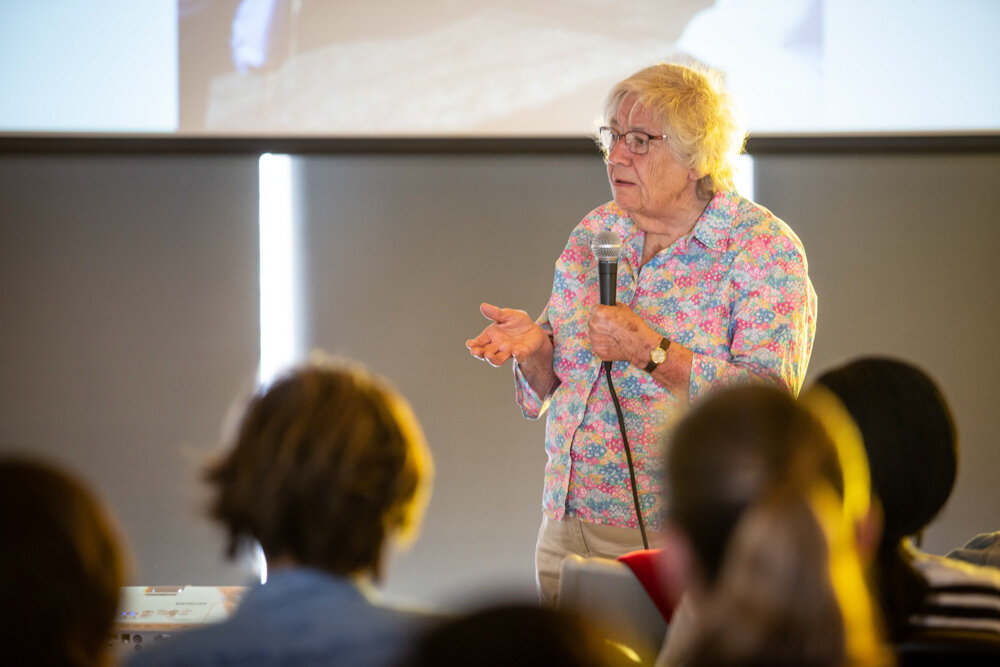
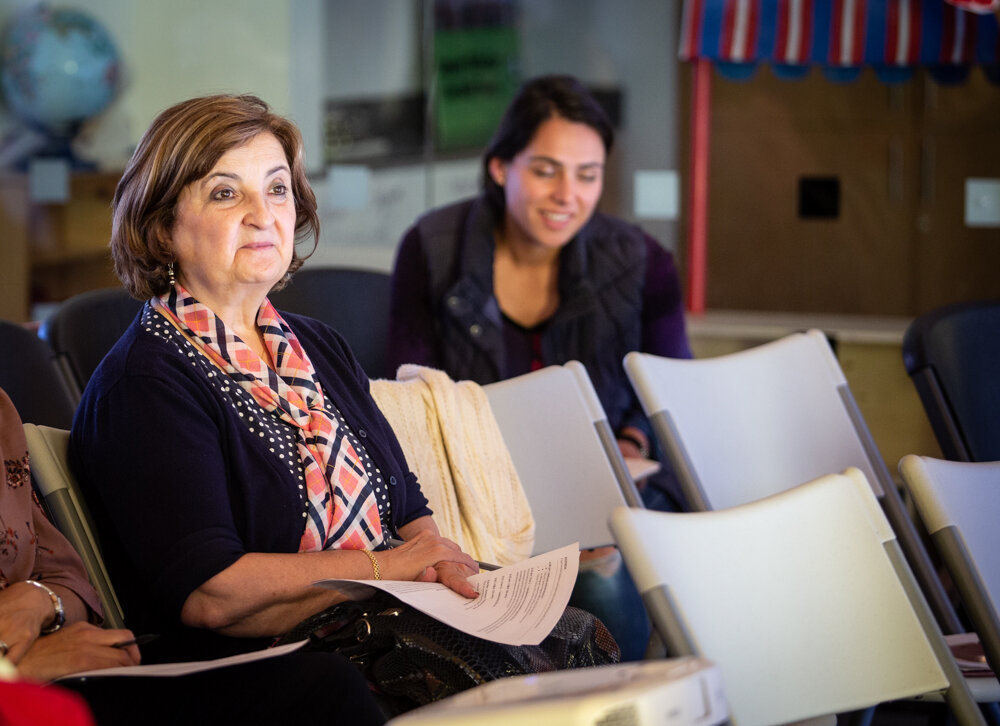
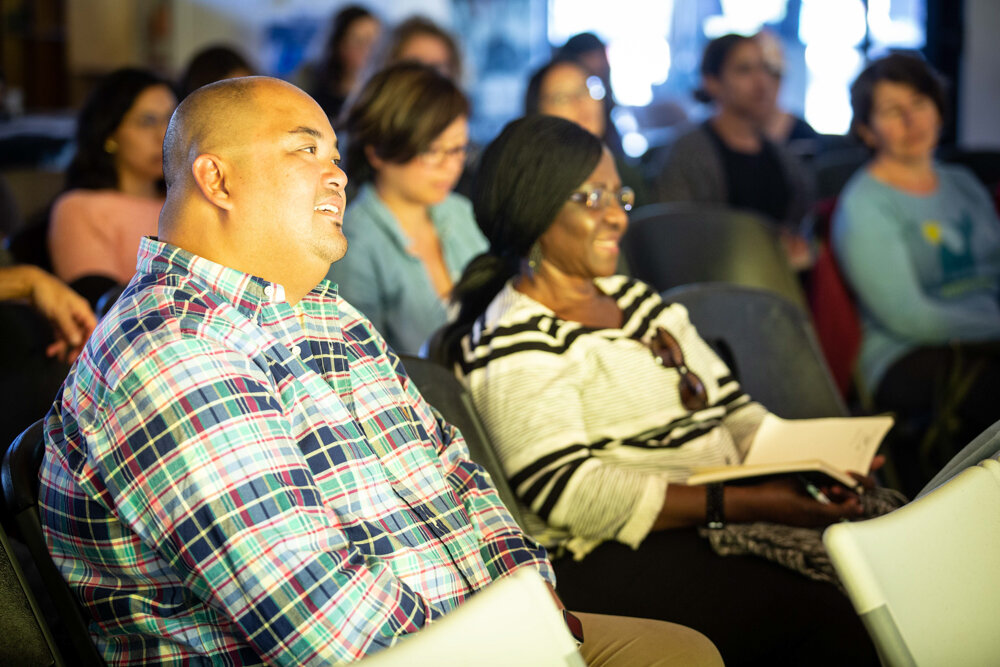
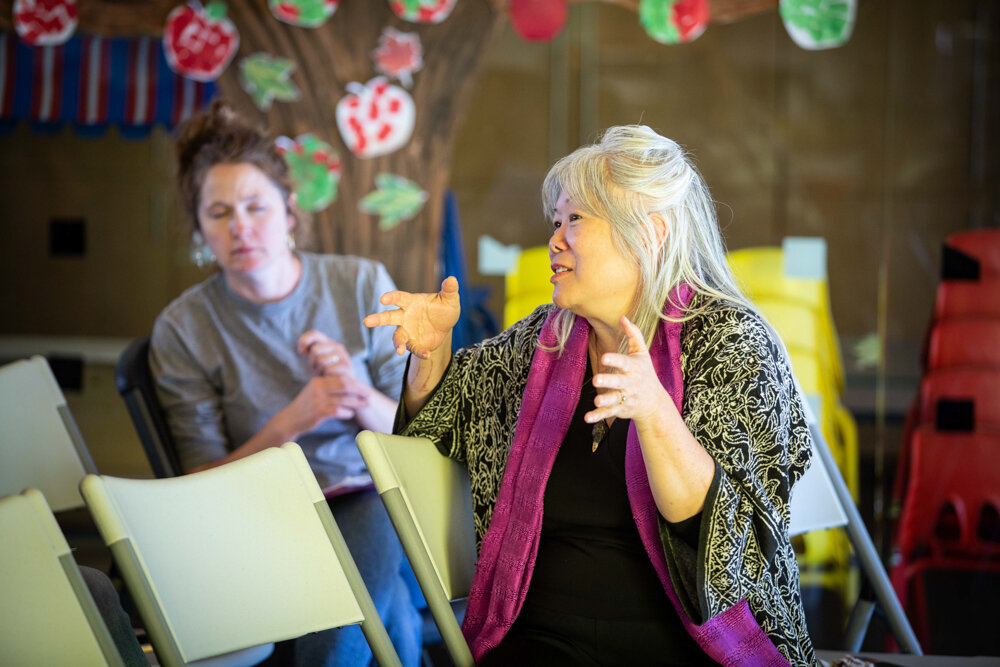
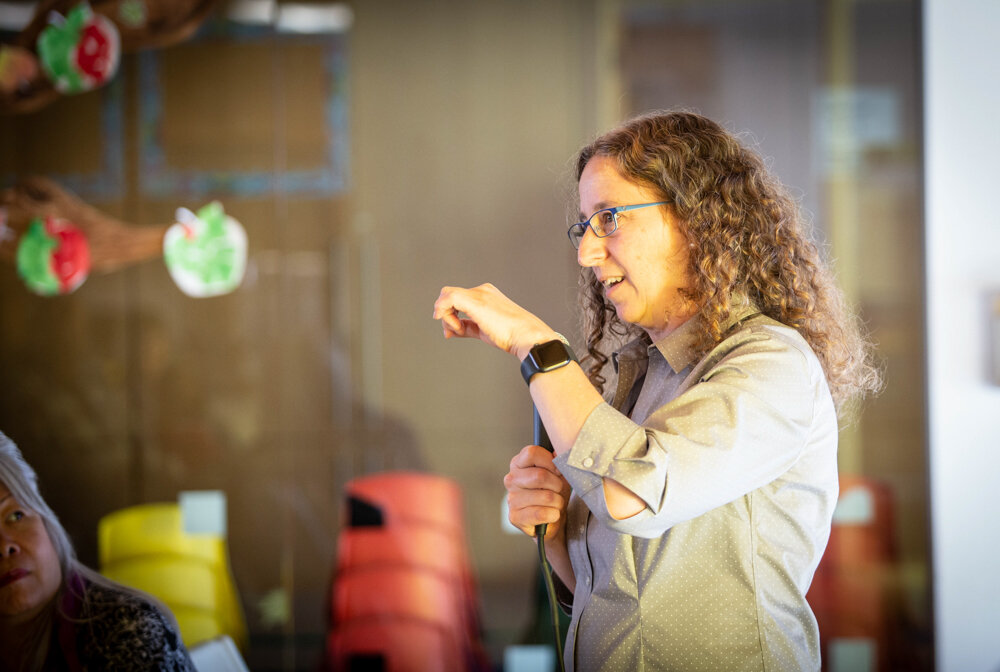
Green Schoolyards America’s Principals’ Institute
Susan Humphries leads Principals’ Institute Participants in a discussion and hands-on lesson during our seminar on October 2, 2019.
Green Schoolyards America hosts a year-long program for school principals and school district administrators that provides resources, advice, professional development, and a peer network that helps principals and school district leaders to adopt and sustain comprehensive, high quality, green schoolyard programs at their schools and in their districts. Our Principals’ Institute includes four one-day seminars and three schoolyard site visit days over the course of the year.
Susan Humphries joined us as our featured speaker for the third seminar of the Principals’ Institute, held on October 2nd at the office of Playworks in Oakland. We extend our heartfelt thanks to Playworks for generously offering us the use of their beautiful space.
Our October Principals’ Institute seminar focused on strategies for developing a nature-rich living schoolyard as a tool to engage students in learning across the curriculum—and as an organizing framework for a school’s overall program.
Ms. Humphries gave a keynote presentation to share her work and the educational philosophy she developed at Coombes. She spoke with the assembled group of school administrators as a peer-mentor, sharing her 50 years of experience in shaping her school’s program and leading the school’s faculty. After the presentation we had an engaging discussion with the school leaders and partners in the room, and focused on the ways that school principals and district administrators can shape the educational approach at their schools. Everyone also participated in a short hands-on activity that explored the properties of feathers, as shown below. (Click here to read more about Susan Humphries’s lessons about feathers.)
In the afternoon, Institute participants discussed their ongoing work to advance their school and districts’ green schoolyard program. Susan Humphries provided feedback on their ideas and offered suggestions for next steps.
Principals’ Institute participants tried one of Susan Humphries’s lessons about feathers—integrating natural materials with science concepts (air currents, biology, aerodynamics) and interpersonal skills (cooperation, communication). See pages 17-18 of our new free publication, Experiential outdoor learning in the schoolyard, mentioned below for a detailed description of this lesson and others developed by susan humphries.
Green Schoolyards America worked with Susan Humphries to create a free online book entitled, Experiential Outdoor Learning in the Schoolyard.
Our new book includes detailed descriptions of the engaging experiential outdoor lessons Ms. Humphries modeled during our Principals’ Institute and at our conference in September.
Please visit our schoolyard activity webpage to download your own copy of this book and the other free schoolyard learning, play, and nature activities in our extended book set.
We hope our readers will try these outdoor activities with their own schools, and will share photos of their schoolyard adventures with us!








